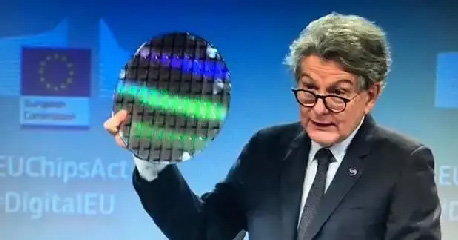
Neuralink, which has not moved for two years, is about to make a big deal again! Musk said that if there is no accident, the company will complete the first human trial in the next six months.
Today, Musk is one step closer to his "sea of stars". At the just-concluded Neuralink press conference, Musk announced that it is expected to start human experiments within 6 months and implant chips into the human brain.
Countdown to the first human experiment!
At the scene, Musk’s voice and demeanor were a little tired. It may be that the recent acquisition of Twitter, layoffs, and fights with Apple have too many things and he is too tired.
Compared with the conference two years ago, in the first half of this conference, he was just a narrator, and the theme was how to create "a universal brain I/O platform".
In the speech, Musk said that the goal of Neuralink is to make a universal I/O interface for the brain, which can help people with debilitating diseases (such as amyotrophic lateral sclerosis, ALS or stroke sequelae), be able to communicate with each other through ideas. people communicate.
Musk revealed that in addition to the brain-computer interface, there are two main products.
Implants in the spinal cord that have the potential to restore movement to paralyzed patients;
Eye implants that can improve or restore human vision when implanted.
According to Musk: "We have reason to believe that in the future, people with spinal cord ruptures will be able to restore full body function. For visually impaired people, even if they were invisible before, we are confident that they will see the light again."
In fact, Musk has always believed that humans will only be able to keep up with the progress of artificial intelligence with the help of computer-like augmentation devices.
Therefore, he also hopes that Neuralink's equipment will one day become truly mainstream, making information transmission between humans and machines more convenient.
However, before a brain-computer interface like this can be widely used in patients, it must go through clinical testing to prove that the implantable device is safe and effective.
Human experiments will be an important milestone for Neuralink.
After all, since its official establishment in 2016, Neuralink has only been tested on animals.
Although an application was submitted to the FDA as early as 2019, there has been no follow-up.
However, Musk said this time that the current negotiations with the FDA are very smooth, and the first human experiment is expected to be approved within 6 months.
This time, Academician Ma first played an old video, which is the familiar monkey playing Atari's classic game: "Pong".
In April 2021, with the help of machine learning software, Neuralink's device translated brain activity into computer instructions, allowing the monkey to play happily with "ideas."
Musk said that you can understand it as replacing a skull with a smart watch.
He joked that I want to implant a brain-computer interface right now, and you can't even see it. There were applause and cheers immediately below.
Musk said: Prototypes are easy, products are hard. At this moment, Neuralink is on the difficult road from prototype to product.
Then, Musk proudly announced: After 6 months, this implant can be applied to the human brain. (Audience cheers)
He said that Neuralink will respect all animal experiment subjects. They used everything they could, benchmarking the implants extensively.
Musk said it might be possible to improve or restore vision to the blind through an eye implant. "Even if they were born without vision before, as long as the cortex in their brain responsible for vision is present, we believe they can regain their vision after the implant is placed."
There is also an implant that can be inserted into the spinal cord and is expected to restore movement to paralyzed patients. Musk said: "It sounds amazing, but we believe that people with severed spinal cords can restore full-body function."
And he emphasized that paralyzed patients connected to the brain-computer interface can control the mobile phone much faster than a healthy person can control the mobile phone with their hands.
In Musk's view, if the human brain can be connected to computers, smartphones, smart watches, radios and the like, it will become much "higher energy".
Because it is wireless, after the implantation operation is completed, it cannot be seen from the outside that the person has implanted the chip. Its battery is also wireless and can be charged at home.
The device for human implantation consists of a tiny device, a wire connected to electrodes, and a robot called R1 robot.
The R1 robot can cut open the human skull and place implants in the brain.

